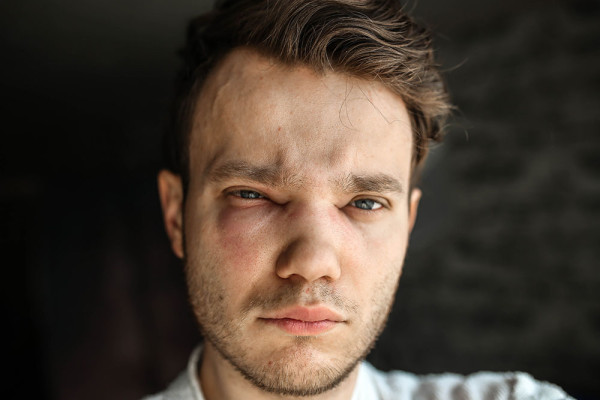Some health workers at Health NZ public hospitals and services are planning to strike on Thursday 23 October to 7am on Friday 24 October. Emergency departments will be open for emergencies only. Strikes planned for 23 to 24 October 2025external link
Angioedema Pupuhi ā-kanohi
Angioedema is swelling caused by blood vessels leaking fluid into the deep layers of your skin. It normally happens on your face, lips, tongue and eyelids but it can be anywhere on the body. It can often occur with a raised itchy rash called urticaria (hives).
Causes of angioedema
Angioedema sometimes happens because of allergies to food, latex, medications or insect bites, or autoimmune causes. The exact cause cannot always be found.
A food allergy can be considered a cause of angioedema if it happens within an hour of eating a particular food. Allergy testing is sometimes used to confirm a suspected food allergy.
Two groups of medications occasionally cause angioedema. These are:
- NSAIDs (non-steroidal anti-inflammatory drugs) such as ibuprofen
- a type of medication used to treat high blood pressure, called ACE inhibitors (for example, cilazapril and enalapril).
Symptoms of angioedema
Symptoms of angioedema include:
- swelling, which can be uncomfortable
- itching or a burning sensation in the swollen area.
Sometimes the organs inside your body may also be swollen. This can cause tummy (abdomen) or chest pain. You might also feel dizzy or faint.

Photograph of angioedema showing swelling around the eyes and face
Complications of angioedema
Angioedema is not usually dangerous unless the swelling makes it difficult to breathe.
If you or someone else has angioedema and cannot breathe properly, it may be a sign of anaphylaxis.
Anaphylaxis is a medical emergency and needs urgent treatment. Follow the instructions for anaphylaxis.
Self care for angioedema
- Put a cool, damp cloth on the swollen area or take a cool bath or shower to soothe the area and reduce itching.
- Avoid hot showers or baths as heat can make angioedema worse.
- Wear loose clothing to avoid irritating the swollen skin.
If you know you are allergic to something you should try to avoid it. This will reduce the chance of you getting angioedema again.
Treating angioedema
The main treatment for angioedema is antihistamine tablets. You can buy them from a pharmacy or your healthcare provider can prescribe them.
If you have angioedema often, or have very bad symptoms, you may need to take the antihistamines every day to try to avoid this.
If the antihistamines do not help, your healthcare provider may prescribe a steroid tablet.